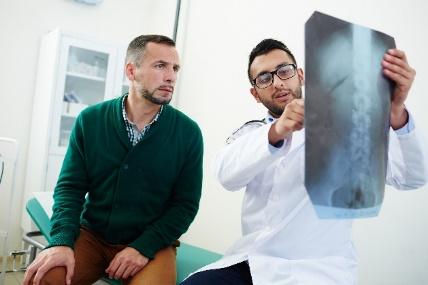
Exercises to Improve Balance and Reduce Pain
January 4, 2023
Mild® Spinal Stenosis Treatment May Be Best for Back and Leg Pain
January 17, 2023How Pain Management Has Advanced with Technology

Pain management is a major component of post-injury or post-surgery care. In the past, pain was largely managed through pharmaceuticals and manual therapies. As technology has advanced, however, so too has the science of pain management – and the options available to those suffering from chronic or acute pain. Let’s take a look at how pain management has advanced in recent years.
Pain Tracking Tools
Pain tracking tools are becoming increasingly popular for those who suffer from chronic pain. Wearable devices such as Fitbit or Apple Watch allow users to track different types of data related to their pain, such as activity levels, sleep patterns, and even food intake. By collecting this data over time, people can develop a better understanding of how their lifestyle impacts their pain levels, allowing them to make informed decisions about how they manage their pain.
Pain Management Through Telemedicine
Telemedicine is a technology that allows patients to consult with their physicians remotely, meaning that doctors can provide advice and treatments from any location. This type of care has become increasingly popular in recent years due to its convenience and cost savings for both patients and doctors alike. For people in chronic pain, telemedicine can be especially beneficial since they are often unable to travel due to their condition. Additionally, telemedicine allows patients access to specialists outside their local area who may be better equipped to diagnose and treat their specific condition.
Advanced Treatments for Chronic Pain
Chronic pain can be debilitating and difficult to manage without proper medical intervention. Fortunately, new treatments such as spinal cord stimulation have been developed in recent years which offer greater relief than traditional methods like medications or manual therapies. Spinal cord stimulation uses a small device implanted near the spine which sends electrical pulses along nerves in order to reduce pain signals from reaching the brain. This type of therapy has been proven effective in reducing chronic back and neck pain, as well as phantom limb syndrome – a common side effect of amputation surgery – among other conditions.
New Technologies for Diagnosis & Treatment
Advances in medical imaging technology have allowed doctors to diagnose conditions more accurately than ever before through MRI scans, CT scans, ultrasound imaging, etc., giving them an inside look into the body that was not possible even just a decade ago. Additionally, new surgical techniques such as robot-assisted surgery allow surgeons to perform operations with greater accuracy and less risk than traditional methods while also providing faster recovery times for patients. All these advances have allowed doctors to more effectively diagnose and treat conditions related to chronic or acute pain with greater precision than ever before.

Pain management is an essential aspect of healthcare today, but it’s come a long way since the days when drugs were the only option for treating chronic or acute pain conditions. Thanks to advances in technology such as telemedicine services and improved surgical techniques, there are now many options available for managing your pain levels — no matter what condition you are dealing with — with greater effectiveness than ever before. If you’re struggling with persistent or acute pains caused by an injury or illness, talk with your doctor about all your options so you can find one that works best for your needs!
Are you looking for a pain management doctor? Give us a call at 941-375-3006 or fill out the form and we’ll get back to you.



